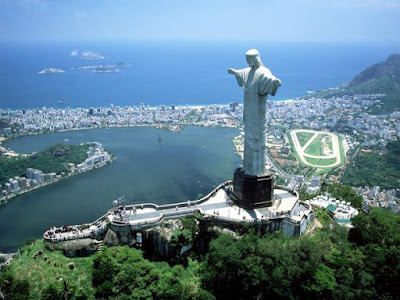Blog
Great Wall of China

New Seven Wonders of the World
Saturday, January 6, 2018
In 2007, more than 100 million people voted to declare the New Seven Wonders of the World. The following list of seven winners is presented without ranking and aims to represent global heritage.
1 Great Wall of China
Everyone has heard of the Great Wall of China. Built in the 5th century B.C. and the 16th century, the first-rate wall of China is a stone-and-earth fortification created to shield the borders of the Chinese language empire from invading Mongols. The exquisite wall is genuinely a succession of more than one partitions spanning about 4,000 miles, making it the world's longest manmade shape.
2. Chichen Itza, Yucatan, Mexico
Chichen Itza became one of the superb cities of the Maya, and it’s anticipated that up to 50,000 human beings might also have as soon as lived there. The maximum significant characteristic is the massive stepped pyramid of El Castillo, however other high-quality stops are the properly-preserved ball courts and the creepy cranium platform, where the skulls of the defeated were carved into stone. The numerous carvings provide you with a touch of the atypical fascination the Toltec-influenced Mayan culture had with loss of life, and the way present it became in their lives.
3. Machu Picchu (Peru)
Machu Picchu, an Incan metropolis of glowing granite precariously perched among 2 towering Andean peaks, is thought through pupils to be a sacred archaeological center for the close by the Incan capital of Cusco. Constructed at the height of the Incan empire within the mid-1400s, this mountain fortress was later deserted by means of the Incas. The website remained unknown besides to locals till 1911, while it was rediscovered by archaeologist Hiram Bingham. The site can only be reached by way of foot, teach or helicopter; most site visitors go to by using teach from nearby Cusco.
4. The Roman Colosseum (Rome)
Rome’s, if not Italy’s, most enduring icon is undoubtedly its Colosseum. Built between A.D. 70 and 80 A.D it was in use for some 500 years. The elliptical structure sat nearly 50,000 spectators, who accrued to look at the gladiatorial activities in addition to different public spectacles, which includes battle reenactments, animal hunts, and executions. Earthquakes and stone-robbers have left the Colosseum in a state of the wreck, however portions of the shape stay open to vacationers, and its layout nonetheless impacts the development of modern-day-day amphitheaters, some 2,000 years later.
5. Taj Majal (Agra, India)
The Taj Majal was built between 1632 and 1648. The Taj Mahal is truly beautiful. It doesn’t remember how many pix you spot, not anything beats seeing it in character. A monument built for romance, it has come to be an image of splendor this is best accentuated by means of how smoggy and grimy its environment are. Touring in India can be arduous and frustrating at times, but the taj mahal became one of these monuments that aren’t an allow-down while you sooner or later arrive. Attempt to get there early to appreciate the morning stillness. Inside the night, take a tuk-tuk to get a view of the Taj from across the river.
6. Petra (Jordan)
Declared a world history website in 1985, Petra changed into the capital of the Nabataean empire of King Aretas iv, and probably existed in its prime from nine b.c. to a.d. 40. The individuals of this civilization proved to be early specialists in manipulating water era, building tricky tunnels and water chambers, which helped create a pseudo-oasis. A number of tremendous systems carved into stone, a 4,000-seat amphitheater and the el-Deir monastery have also helped the website earn its fame.
7. Christ the Redeemer Statue (Rio de Janeiro)

The artwork deco-style Christ the Redeemer statue has been looming over the Brazilians from upon Corcovado mountain in an awe-inspiring country of eternal blessing in view that 1931. The 130-foot reinforced concrete-and-soapstone statue became designed by Heitor da Silva Costa and fee approximately $250,000 to construct - plenty of the cash changed into raised thru donations. The statue has emerged as and without problems recognized icon for Rio and Brazil.
Previous article
Next article






